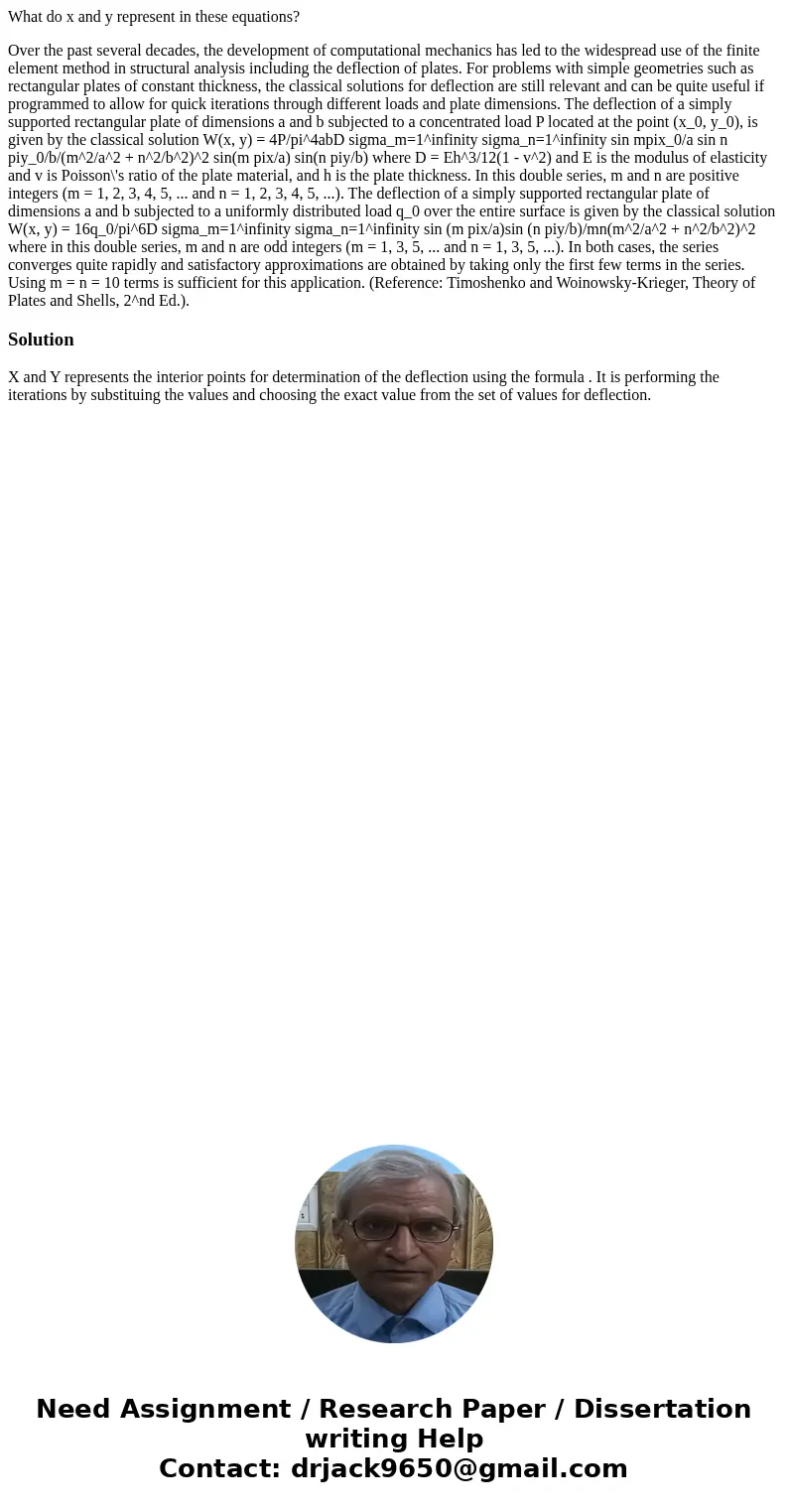What do x and y represent in these equations Over the past s
What do x and y represent in these equations?
Over the past several decades, the development of computational mechanics has led to the widespread use of the finite element method in structural analysis including the deflection of plates. For problems with simple geometries such as rectangular plates of constant thickness, the classical solutions for deflection are still relevant and can be quite useful if programmed to allow for quick iterations through different loads and plate dimensions. The deflection of a simply supported rectangular plate of dimensions a and b subjected to a concentrated load P located at the point (x_0, y_0), is given by the classical solution W(x, y) = 4P/pi^4abD sigma_m=1^infinity sigma_n=1^infinity sin mpix_0/a sin n piy_0/b/(m^2/a^2 + n^2/b^2)^2 sin(m pix/a) sin(n piy/b) where D = Eh^3/12(1 - v^2) and E is the modulus of elasticity and v is Poisson\'s ratio of the plate material, and h is the plate thickness. In this double series, m and n are positive integers (m = 1, 2, 3, 4, 5, ... and n = 1, 2, 3, 4, 5, ...). The deflection of a simply supported rectangular plate of dimensions a and b subjected to a uniformly distributed load q_0 over the entire surface is given by the classical solution W(x, y) = 16q_0/pi^6D sigma_m=1^infinity sigma_n=1^infinity sin (m pix/a)sin (n piy/b)/mn(m^2/a^2 + n^2/b^2)^2 where in this double series, m and n are odd integers (m = 1, 3, 5, ... and n = 1, 3, 5, ...). In both cases, the series converges quite rapidly and satisfactory approximations are obtained by taking only the first few terms in the series. Using m = n = 10 terms is sufficient for this application. (Reference: Timoshenko and Woinowsky-Krieger, Theory of Plates and Shells, 2^nd Ed.).Solution
X and Y represents the interior points for determination of the deflection using the formula . It is performing the iterations by substituing the values and choosing the exact value from the set of values for deflection.

 Homework Sourse
Homework Sourse